On the last day of 2021, Kazakhstan welcomed the New Year as usual, with fireworks, a day off work, and a congratulatory address to the nation by President Kassym-Jomart Tokayev. Less than a week later, the southern city of Almaty, once the national capital, was aflame. Anti-government protests had rapidly escalated into gunfire, sieges of public buildings, and a shutoff of the internet in the city. Hundreds were killed. The future of the country was in doubt.
And then the storm vanished as quickly as it began. Only two weeks after the start of the protests, Russian peacekeepers were already departing from Almaty’s airport, which protestors had briefly seized on January 5. Despite the apparent calm, the country was gripped with confusion. The speed at which it all came and went just didn’t make sense. Senior figures were suddenly under arrest. Rumors spread about what battles were going on within the regime. I booked a ticket and went to figure things out for myself.
The government moved quickly to clean up Almaty, but hadn’t quite finished the job by the time I arrived. At Republic Square, which had seen some of the worst violence, broken decorations atop an archway swung in the breeze. Riot detritus had been casually swept beneath a tree. Young women were doing a photo shoot next to the broken glass. I was accompanied by my colleague, Aziz, a local who had seen the events unfold. As we observed a construction crew at work in Almaty’s torched city hall, I remarked to him how surprised I was at the speed at which orderly society had resumed.
“Right around the corner here, protesters were storming the presidential residence with hunting rifles they got from gun shops,” Aziz told me. “And the defending guards were shooting them with rubber bullets…you should have seen it, man, it was impressive.” Maybe something had been lost in translation, or maybe he was being sarcastic, but he wasn’t lauding the violence. One of his friends, a cameraman, was killed when the riots heated up.
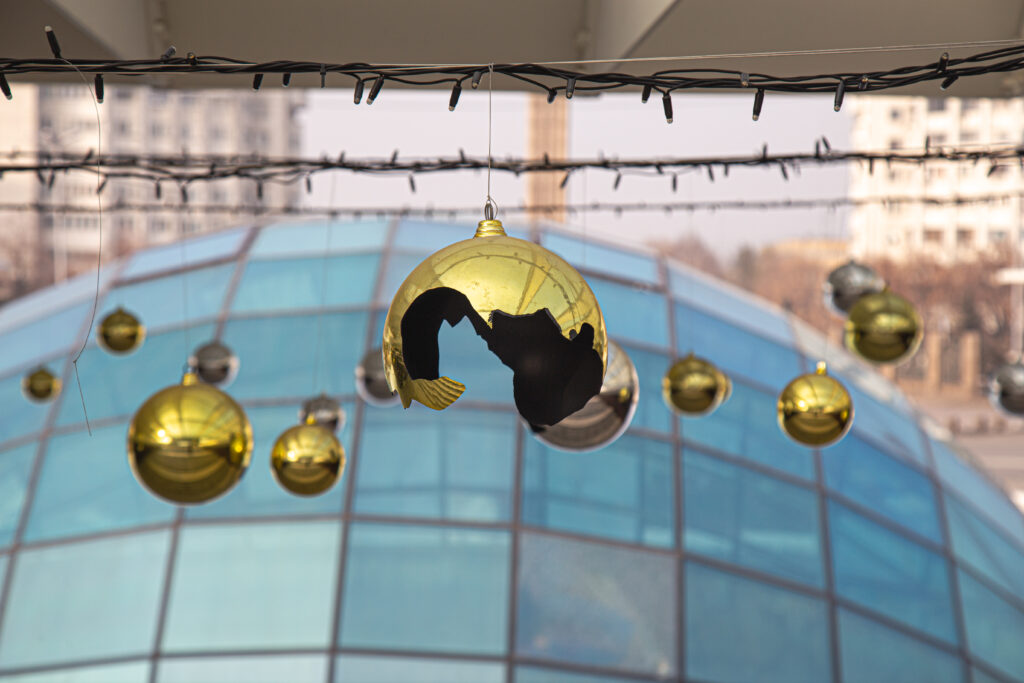
A mile away, an authorized protest had gathered outside the National Academy of Sciences. The police monitored the assembly from the rooftop, concealing their weapons and avoiding the optics of armed ground-level security. Facial recognition cameras took attendance.
A speaker draped in the Kazakh flag took to the podium to address the crowd. “Tomorrow, we must have new presidential elections. From the beginning, Tokayev acquired his position illegally,” he declared. “We must take control of the election commissions!” As the speech wound down, I asked one young demonstrator what he wanted the government to know. “I want the government to be responsible for the innocent people who were killed,” he replied. “For the women and children who were just out on the streets, for those who were arrested and tortured, for those who were taken out of hospitals!”
Three forlorn women displayed photographs of their sons who were arrested earlier that month. A young boy walked into the frame in the middle of our interview and started to caress one of the pictures. One of the mothers, Zhanar, explained: “That’s his nephew. He thinks he’s dead.” She said their sons had their car commandeered by armed men, who then forced them to remove their license plate and go to a gun shop. “Those people loaded the stolen guns into their car, and drove together with our children to the square. From there, people took the guns out of their car, and then our children ran away.” Zhanar insisted that they weren’t participants from the onset. “On January 4th and 5th, our children were working…” She was shocked to get a call at 1 a.m. the following day from her son as he sat in jail. He was asking for a lawyer.
Later that week, at Kazakhstan’s border service academy, I interviewed the cousin of a slain soldier named Zhandos. He, along with Zhandos’s widow, had just laid flowers at the spot inside the compound’s walls where he was fatally shot. Zhandos had called his mother the night before the attack, told her he would dress warmer, and that everything would be fine. This wasn’t an exceptionally dangerous military post, his cousin explained to me, and nothing foreshadowed such serious trouble. The violence came as a shock to nearly everyone.
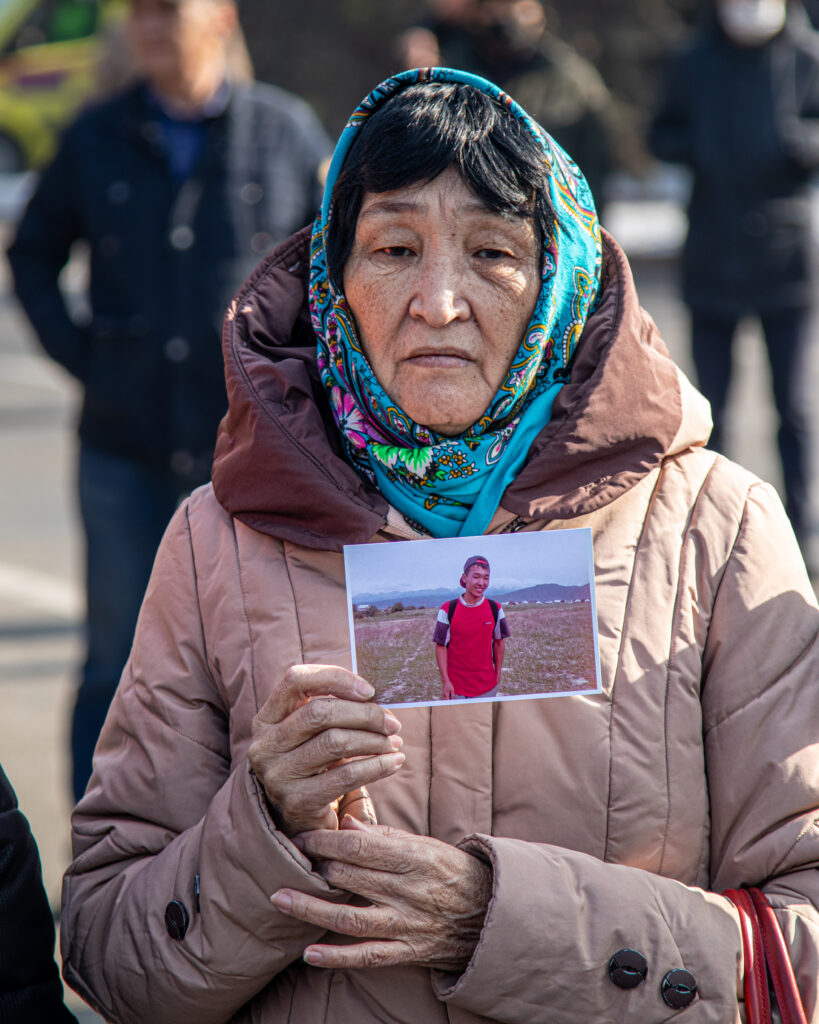
Strange Beginnings
When speaking to people in Kazakhstan about the protests, the common sentiment among both supporters and opponents was a shared suspicion about how suddenly violence had erupted and how quickly the riots had grown.
This wasn’t the first time the country had seen protests. In 2019, Tokayev began his tenure as president after decades in the highest levels of government under Nur-Sultan Nazarbayev, who had ruled the country since 1990. Among the establishment, he had long been seen as a potential successor—but also a fairly nominal one, with Nazarbayev and his family still pulling the strings. The transfer of power sparked controversy among long-time opponents of Nazarbayev’s government, who organized nationwide protests. Despite a harsh crackdown, not a single death was recorded as a result. Smaller outbursts of violence had occurred prior to this. In 2011, security forces opened fire on striking oil workers in the city of Zhanaozen, killing 17.
The riots which engulfed the country in January also started as a working-class protest in Zhanaozen. The prelude to it all was a government decision on the price of fuel. On January 1, Kazakhstan lifted price controls on liquified petroleum gas (LPG), calling them financially unsustainable. Prices doubled overnight. Protests broke out the following day.
But almost overnight, the movement had morphed into a general anti-government grievance campaign. By January 4th, 5000 demonstrators had gathered in Kazakhstan’s former capital and largest city, Almaty. “Old man, go away!” they chanted, referring to Nazarbayev. Despite having stepped down as president, he still wielded significant power as head of the Security Council of Kazakhstan, an advisory body to the President on military matters. This ended up being a turning point in the narrative of the protests. As people returned to the streets the following day, the mood had changed from optimistic to militant.
No one I spoke with believed that a dispute over fuel prices, or agitation for new elections, really lay behind the sudden turn. Lebanon, which boasts some of the highest fuel prices in the world and a total economic collapse, has seen no protests of a magnitude like those in Kazakhstan. Nor was it inevitable that lingering Soviet-era influences would inevitably translate into a harsh crackdown. Ukraine, a fellow post-Soviet state, underwent the 2014 Euromaidan protests just several years earlier. During those protests, intense battles between rioters and police went on for weeks before live ammunition was used. The death toll of Euromaidan was 130 casualties. The toll for Kazakhstan’s “January Rebellion” was nearly double.
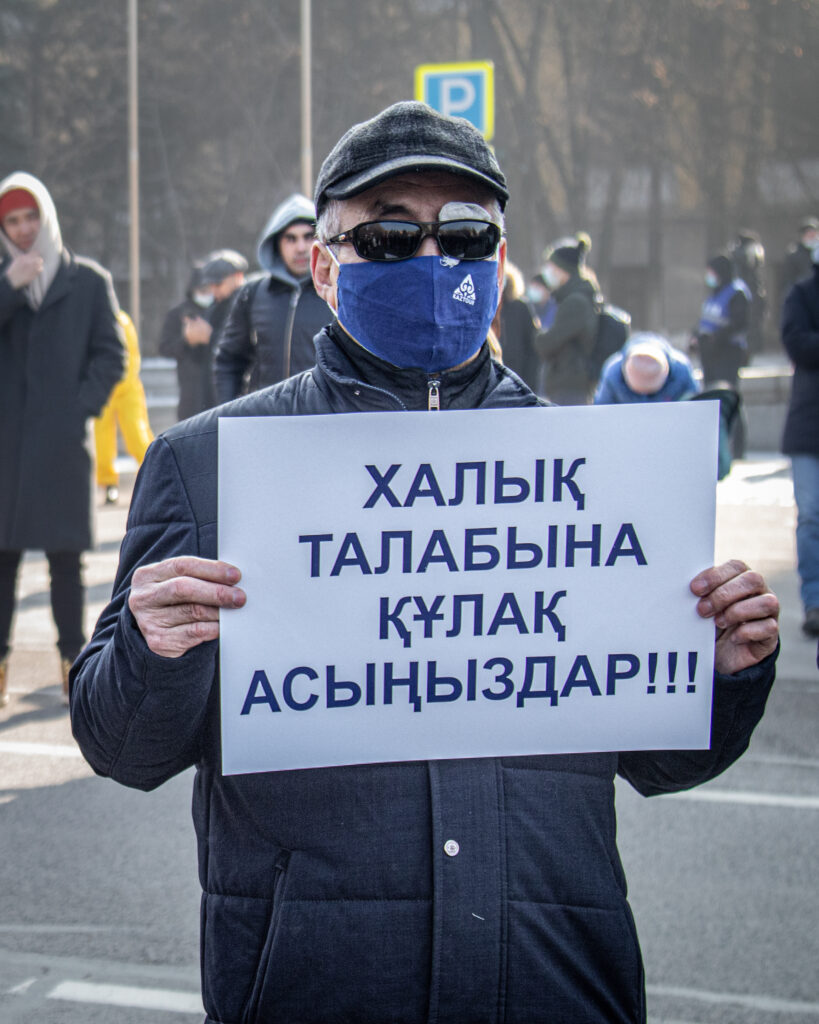
What happened is mysterious, but not inexplicable. One consistent pattern reported during these later protests was the absence of Kazakhstan’s national security services and police as things became violent. On January 5th, journalists Almas Kaisar and Dmitry Mazorenko reported that this unresponsiveness made it impossible to verify the rumors of killings. No one would pick up the phone at the city police department. The internet was switched off nationwide, making it very difficult for local residents to understand what was going on.
I spoke with a local named Roman Ivanov, who recalled there being no police for three days: “Almaty was abandoned…We organized patrols in the streets on our own. The men came out and we took the hunting rifles that we had. So we guarded our houses ourselves.” Without resistance from the state, organized groups of heavily armed men overtook the airport. They stormed the mayor’s office, set ablaze the state broadcasting corporation, president’s residence, and prosecutor’s office. They raided a police armory, stealing high-caliber machine guns and explosives.
Seemingly unable to trust his own forces, Tokayev called upon the Russian-led Collective Security Treaty Organization (CSTO) to intervene. The alliance acceded to his request, and about 3600 troops from Russia, Kyrgyzstan, Tajikistan, Belarus, and Armenia arrived on January 6th. With CSTO troops protecting strategic locations, Tokayev gave new orders to the local police: shoot to kill without warning. The demonstrations were ruthlessly suppressed.
One day earlier, Tokayev had also made the politically explosive decision to remove Nazarbayev from the Security Council. After 29 years as president of Kazakhstan, and two years as “father of the nation,” Nazarbayev found himself dethroned by his former protégé, once viewed as a merely nominal successor.
Tokayev then arrested Karim Massimov, who had been head of the country’s National Security Committee—an intelligence agency focused on Kazakhstan’s borders—but was fired from this post the same day as Nazarbayev’s removal. A close associate of Nazarbayev, Massimov now found himself charged with treason. Deputies Anuar Sadykulov and Daulet Yergozhin were also charged.
Just nine days of upheaval ended 30 years of relative peace in a country lauded for stability among its post-Soviet peers.
Aftermath
“When Massimov was arrested, [members of the security service] didn’t know what to do,” Kazakhstani human rights lawyer Aiman Umarova told me. “They were waiting, and didn’t know who to receive orders from.”
I met with Umarova after hearing about her work initiating the creation of an independent, bipartisan commission called Amanat (“Duty”) to investigate the January unrest. It includes human rights activists and criminal lawyers, but also representatives from both the Prosecutor General’s office and the Ministry of Internal Affairs. Kazakhstan’s Secretary of State has voiced support for the commission, indicating it could be able to influence the outcome of criminal cases. While more stridently anti-government committees exist to do similar work, it’s unlikely they will gain the same level of favor with the state.
In her office, Umarova sat at the head of a table while family members gathered around to plead their case. She later told me she sleeps about 3 hours a night. On her wall were photos of her with Melania Trump, who presented her the International Woman of Courage Award in 2018, and one with Tokayev himself. Among the attendees were the three mothers I met at the demonstrations earlier that week. I asked what they’ve heard since, and they told me that while their lawyer said their boys weren’t being tortured, they hadn’t been able to see their sons and confirm things for themselves. Also in attendance was one of the fathers, who was having a tense exchange with Umarova. He was insistent their sons were innocent. But, Umarova explained, the commission is bound by due process. “This must be confirmed by the investigation first.” The exasperated father kept a diplomatic stance. “Ms. Umarova, please excuse us. We are so tired.” Umarova was sympathetic to their cause, but it was only one of well over a hundred cases she sorts through each day.
Umarova took on their case because the story of these three young men was unique. “They were forced by armed people to go to the square,” she said. “It’s natural that they were arrested.” Umarova considers their alibi—that they only went to the square and gunshop under duress—as possible evidence of more violent extremist activity among a subset of demonstrators. By distinguishing regular protestors from these elements, she hopes Amanat can act as a legal advocate for those who attended the protests with peaceful intentions. “Some [who were arrested] say they were just watching,” she said. “Others say they came to participate but didn’t know the plans that others had…there were people who used this peaceful demonstration so that if they were shot by police they could say, ‘See, the police are shooting at innocent people!’ And if the police don’t shoot, they will shoot at the police.”
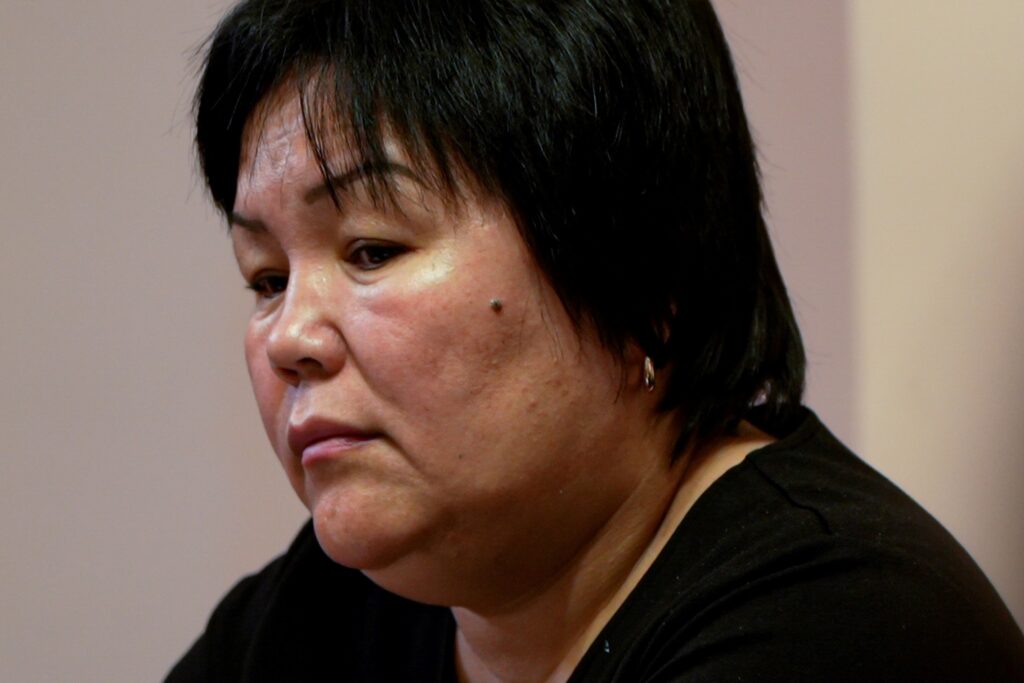
By January 9th, order had been restored to most of Kazakhstan, although some clashes were reported between security forces and demonstrators that night. On January 10th, the internet came back on, and social media was flooded with videos from the past week. Desperate people were posting pictures of their family members, unsure if they were in prison or among the dead.
The vast majority of protestors killed or currently behind bars didn’t know they were participating in a “terrorist plot.” But a critical mass of insurrectionists gave ample justification for the state to arrest just about anyone. From the government’s perspective, mingling with people shooting at the police is probable cause. Umarova believes that a number of the protests had telltale signs of planned violence: “Peaceful rallies don’t only consist of men. But here the majority were men, a lot of men. During a peaceful rally, there aren’t men who can shoot, fight, and so on. During this ‘peaceful’ rally, the security guards were instructed by a call to leave, and then [militants] entered the airport. Is this a peaceful rally?”
What did she think about the accusations from government officials about foreign involvement in the protests? “I think that there was an order, and that external forces were involved as well,” she said. “But here’s the thing: by saying external forces I don’t mean the Taliban, or anything like that. I mean [Kazakhstani] citizens. [The militants] were our people who were abroad and were given an order.” Who did she think had the capacity to give orders like this? “The situation is very complicated now… not only are oligarchs involved, but our security services as well.” She paused for a moment. “The most frightening thing is that the Almaty Department of the National Security Committee left us alone [during the demonstrations] and went elsewhere. This is a betrayal, and this fact must be investigated too.”
It’s often hard to discern the particular factional lines within Kazakhstan’s small and insular elite. But Tokayev’s decision to remove Nazarbayev and then arrest Massimov so early on signals that he perceived the threat to be internal. On January 13th, the CSTO announced that their withdrawal was underway, and all CSTO forces had left Kazakhstan by the 19th. CSTO troops were assigned to the protection of critical infrastructure but never fired a shot, nor did they report any injuries or damaged equipment. After Massimov’s firing, the domestic security services, and the military seem to have obeyed Tokayev’s orders. Once they were properly mobilized, the protests were quickly crushed—another sign that decisions to fall back and abandon key locations to violence may have been intentional. For those wavering in loyalty to Tokayev, the intervention was a clear message: if necessary, the government would be propped up with Russian arms.
Tokayev himself blamed the events on 20,000 “bandits” and “terrorists,” and spoke about a “single center” of organization. Despite these ongoing allusions to foreign involvement, Kazakhstan’s government has been less than clear about where the terrorists originated from.
On January 9th, Kazakhstan’s state broadcasting corporation, which was nearly burned to the ground earlier that week, aired an interview with one of the alleged terrorists. His face scratched and bruised, the man confessed: “On [January 1], unknown people contacted me and offered me 90,000 tenge [about 205 U.S. dollars] to take part in meetings [in Kazakhstan]. And since I’m unemployed in Kyrgyzstan, I agreed.” But after the video made the rounds online, the man was identified as Vikram Ruzakhunov, a Kyrgyz jazz musician that frequents Kazakhstan for gigs—certainly not unemployed. The government of Kyrgyzstan demanded his release, and he was transferred to Bishkek on January 10th. In a later Instagram post, Ruzakhunov offered a sardonic thanks to the state broadcaster for making him their showcase terrorist, thus alerting his friends and government to his illegitimate capture.
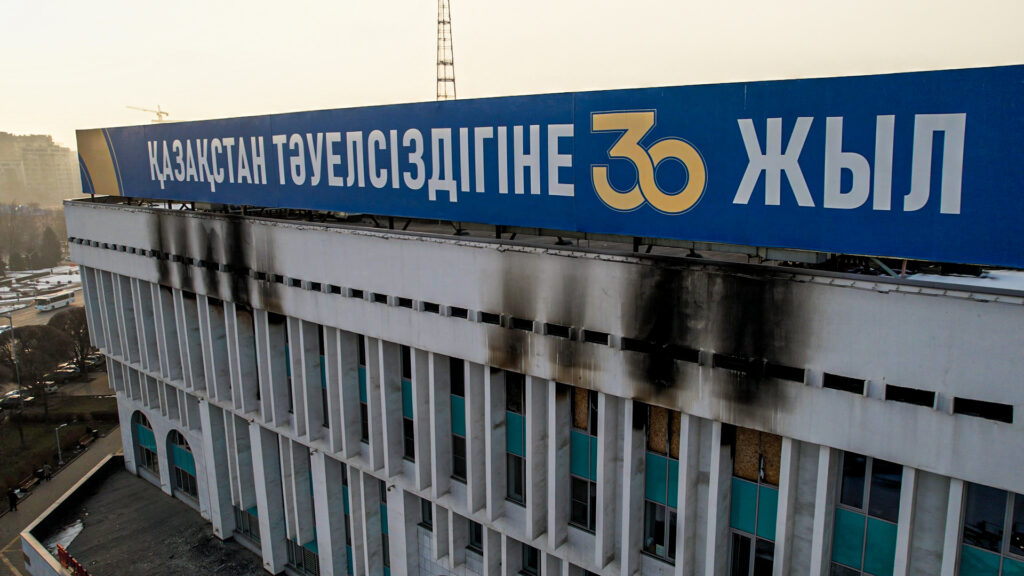
The outsized violence, given the original intentions of the protests, is what feeds accusations of foreign involvement, including by senior government leaders. As protests unfolded, both locals and foreigners speculated about Western or even Turkish infiltration. Those who supported this theory could point to the presence of several Western NGOs in Kazakhstan. Most commonly invoked were the National Endowment for Democracy, a U.S.-funded NGO which opponents have long labeled a CIA front, and the Open Society Foundations in Kazakhstan.
While these organizations have long been the target of Russian scrutiny—Russia banned the NED as an “undesirable” NGO in 2019—it’s not clear whether these rumors fed into Moscow’s rapid response. More certain is that the events that followed Ukraine’s Euromaidan protests a few years earlier likely occupied the minds of Russian leaders. Moscow’s late response to the Euromaidan movement ultimately resulted in the toppling of a pro-Russian government and the ascendency of a pro-Western, pro-NATO government in Kiev. This time, Kazakhstan’s Russian allies acted swiftly, immediately acceding to Tokayev’s request and putting boots on the ground.
War Within the State
There seems little reason to doubt that the original protests in Zhanaozen were an authentic, bottom-up protest from workers and residents who were upset with fuel prices. But as events spiraled, an element existed that knew where to find weapons, was willing to use them and proficient in doing so, and likely had ties to the security state. The protests appear to have been an opportunity to attempt a coup against Tokayev’s government, or to create the conditions for others to do so. The initial pattern of police standing down and retreating seems too widespread to be a momentary decision undertaken by lower- or middle-ranking officers.
In a video from January 5th, people can be seen snatching up rifles offloaded by a truck. Some were likely convinced on the spot to grab one of the firearms being handed out, but who was responsible for acquiring them? According to Almas Kaisar and Dmitry Mazorenko, men with firearms, rather than peaceful protestors, noticeably dominated the streets that evening:
People in military or police uniforms appeared in the crowd. On social media, eyewitnesses reported rumors that individual police and military officers had gone over to the side of the protesters. They shared their equipment with other demonstrators to make them stand out less in the crowd, observers believed. We could not confirm how reliable this information is.
Some demonstrators aroused indignation and fear among other protesters by their appearance: it was easy to mistake them for adherents of radical religious movements. A bearded man with a travel bag was surrounded and asked to show the contents of his bag. “Is he not a Wahhabite [a follower of a fundamentalist movement within Sunni Islam]? What is he carrying?” people asked. There was nothing serious in the bag, however. In total, about ten men with beards were found in the march.
The violence and attacks on government buildings began that same night. Similar reports paint a clear picture of the distinction between the peaceful protestors and factions of insurrectionists. Eyewitnesses reported that the protestors participating in violence and property destruction seemed to wear similar black jackets and carry identical masks and other gear. While some proposed that they had come from poorer districts in Almaty, this doesn’t explain the coordination of the attacks on critical government infrastructure. It also doesn’t account for security forces falling back during those attacks, despite showing the capability to successfully use force later on, after Tokayev took control of the security state.
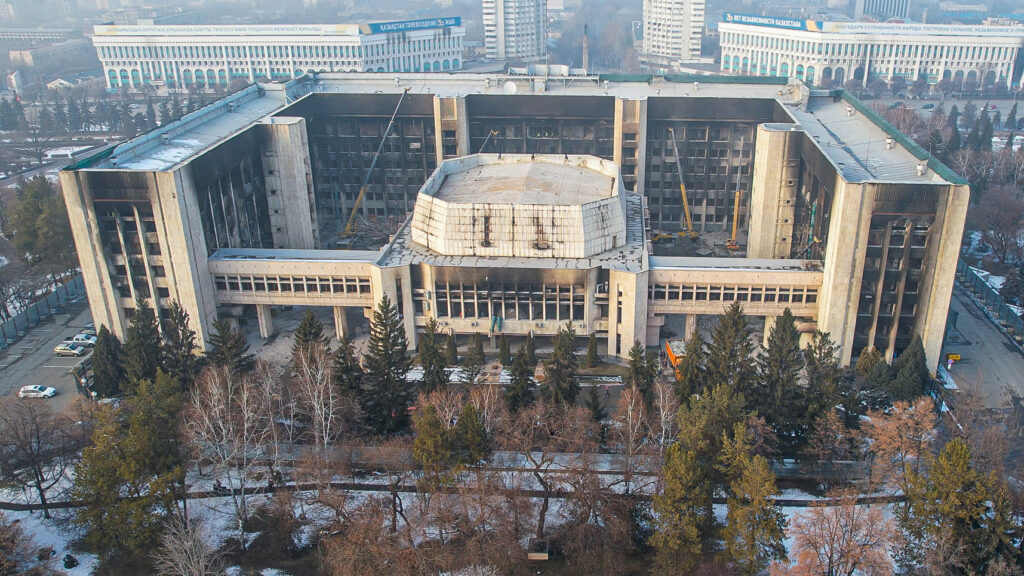
While it’s currently difficult to identify who was behind these insurrectionist factions, some clues exist in the actions that Tokayev and his allies undertook within the state itself.
Throughout the last 30 years, Nazarbayev used his time in power to tighten his grip over the state and take control of the natural resources that are the basis of political power. As reported by the political consulting firm Bismarck Analysis, he gave members of his family control over state industry and appointed them to key positions in government. He appointed his son-in-law, Timur Kulibayev, as head of the country’s sovereign wealth fund, and began appointing provincial governors rather than continuing elections. The overall impact of his actions was to undermine and remove the Soviet-era elite that had previously governed Kazakhstan and replace them with a tighter inner circle.
In 1995, Nazarbayev’s daughter, Dariga Nazarbayeva, founded the Khabar group, a conglomerate that was given control of 80% of the country’s media. Nazarbayeva stepped down in 2003 to run for political office and held various government positions over the next decade. In 2015, she was appointed Deputy Prime Minister, a move perceived to be part of Nazarbayev’s succession plans. After Tokayev took power in 2019, Nazarbayeva was appointed Chair of the Senate, and was widely expected to eventually assume the role of President. Tokayev was himself perceived to be a placeholder.
But after serving as Minister of Foreign Affairs, Chair of the Senate twice, and as Prime Minister, Tokayev wasn’t satisfied with the mere illusion of power. In May 2020, Tokayev asserted himself by removing Nazarbayev’s daughter from the Senate entirely.
This betrayal by a former protégé was only the latest of a great number of cracks that had formed in Nazarbayev’s inner circle over the years—including within his own family. His most notable antagonist turned out to be another son-in-law, Rakhat Aliyev. Aliyev married Dariga Nazarbayeva in the 1990s; with her, he shared in the wealth and power of the state. But as his star rose, he began his own plots to usurp control of Kazakhstan.
According to a document leaked by Wikileaks, U.S. diplomat Richard Hoagland recounted discussions with Zharmakhan Tuyakbay, then-leader of the Nationwide Social Democratic Party. According to Tuyakbay, Aliyev was conspiring to take Nazarbayev’s position by force:
According to Tuyakbay, when Aliyev was deputy chairman of the Committee for National Security (KNB) at the beginning of this decade, he asked Nazarbayev for permission to wire-tap all senior officials and financial oligarchs, telling Nazarbayev it was a way to protect him. However, Nazarbayev eventually learned that the “extremely ambitious” Aliyev had tapped him, too, and was building a collection of “kompromat” to use eventually to displace Nazarbayev and install himself as president. Nazarbayev “soft-exiled” Aliyev to Vienna as ambassador to get him out of his hair, but Aliyev started leaking his “kompromat” against Nazarbayev, which led to their total rupture. According to Tuyakbay, this was the beginning of when power began to ebb slowly away from Nazarbayev. According to Kazakh cultural tradition, Nazarbayev lost face because he could not control his own family. This loss of face has begun to convince others that Nazarbayev is not eternal and omnipotent.
In 2007, Nazarbayev put out an international arrest warrant for Aliyev for money laundering and kidnapping. He died in an Austrian prison in 2015, allegedly by suicide—an autopsy result that was later contested.
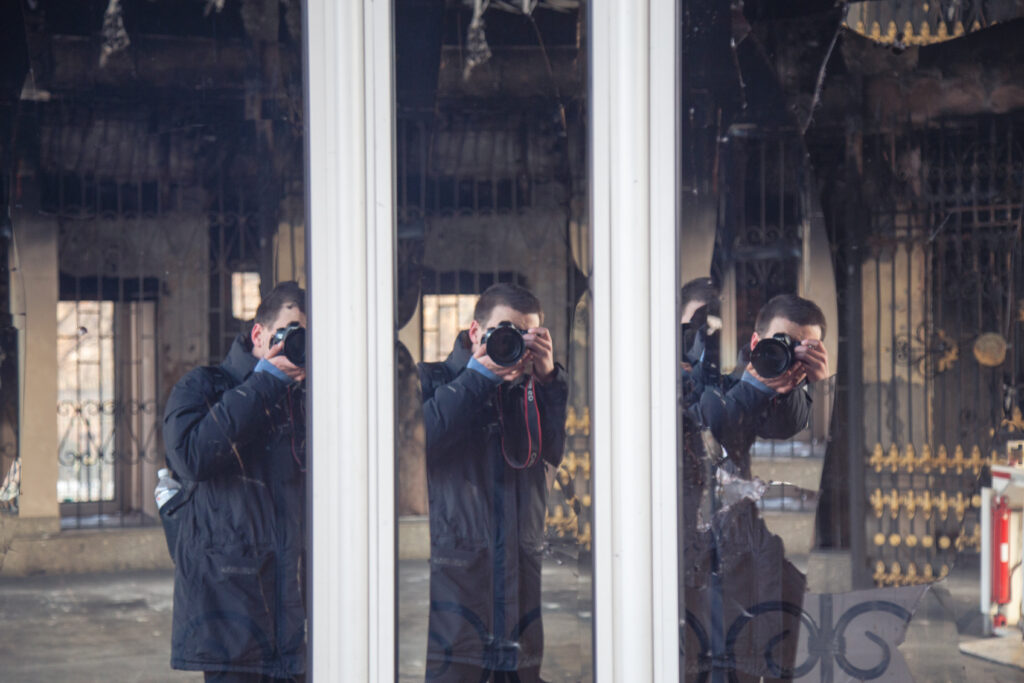
No sooner was Aliyev out of the picture than a new familial antagonist emerged. In 2020, Dariga Nazarbayeva and Aliyev’s son, Aisultan, began making startling accusations against his family on Facebook. Among the accusations was that Nazarbayev was actually his father and that his mother was trying to assassinate him while he was living in London. He also alleged that Nazarbayev was sponsoring armed Salafist groups, “hidden in forests and mountains.” Former National Security Committee chairman Alnur Mussayev, who had close personal ties to the family, later confirmed that Aisultan was not Aliyev’s biological son—though he would not reveal the real father’s identity. Aisultan himself died in London in August 2020 after years of drug addiction, with a British coroner identifying a heart attack as his cause of death.
In the wake of these events, Tokayev’s moves against Nazarbayev’s inner circle threatened his increasingly fragile hold on political power and succession. But as the protests began, Nazarbayev and his family still controlled Kazakhstan’s security state. Nazarbayev himself remained chairman of the Security Council. His nephew, Samat Abish, sat as Deputy Chairman of the National Security Committee. By the end of January 2022, Tokayev had successfully purged them both—along with Nazarbayev’s son-in-law Kulibayev, who had become chairman of the National Council of Entrepreneurs.
While the familial intrigue and factional divides provide a good explanation as to the cause of the infighting, the question remains of just who could have acted as an insurrectionist force on the streets.
A few weeks after the uprising, I joined a group of locals on a mountain climbing expedition just outside of Almaty. The man responsible for organizing the trip was a keen outdoorsman in his early 40s to whom the events of January had come as no surprise. “I knew these events were going to happen because a policeman friend had told me about it,” he said. “But they expected it in December.” I asked him what he made of Aisultan’s claims about Nazarbayev secretly training Salafists. “In the mountains, there are places to which access is closed. I know this because I can travel,” he replied. “Rangers and foresters say they have seen such groups. I know that there are many Salafists and other movements that have been coming to our city and outskirts for several years.”
This, I later learned, was more than an outdoorsman’s tall tale. Former Nazarbayev advisor Yermukhamet Yertysbayev, a recent defector to Tokayev, recently made similar claims of Salafist training camps in the region. While the state officially opposes Salafist activities, such groups maintain a presence both in the criminal underworld and in Almaty itself—in particular, one Saudi-funded “cultural center” in the city has escaped the shutdowns enforced against other Salafist institutions and camps. The nearby mountain range of Trans-Ili Alatau is also a fertile ground for Salafist activity and training camps. Over the course of August 2011, alleged Islamists killed 11 people who had happened upon their base where they had been living with their wives.
A press release by the government on the 14th of January reported that a group of armed men was arrested in Zailiysky Alatau. They wore long beards in styles associated with conservative schools of Islam, something prohibited by law in Kazakhstan due to its Salafist connotations in the region. Elsewhere, a member of the banned Islamist group Tablighi Jamaat was detained, also bearing weapons. All of these men are suspected to have participated in the protests and subsequent looting of Almaty. Non-religious elements of the criminal underworld, including cattle thieves, were also arrested in connection with the protests.
The relationship between Nazarbayev family members and Kazakhstan’s radical Salafist movement is hard to plot, but one more notable figure stands out: Kairat Satybaldy, brother of Samat Abish. Like Abish, Satybaldy has previously served on the National Security Committee. He is also widely regarded as a Salafist sympathizer with ties to the movement’s radical underbelly. His close ties to the ruling family and personal wealth made him a powerful patron. According to accusations from rival politicians and local media, he used this position to keep state pressure off favored Salafist groups.
Together, Abish and Satybaldy appear to have operated at the intersection of state power with Kazakhstan’s underworld. Felix Kulov, former Prime Minister of Kyrgyzstan, spoke openly in a now-deleted Facebook post about the reputation of both men for political intrigue and illicit wealth:
It’s no secret that Samat [Abish], together with [Nazarbayev’s] other nephew, Kairat Satybaldy, controlled many markets and, in particular, the one located at the exit from Almaty towards [the Kyrgyz capital of] Bishkek. They controlled the markets through criminal structures, which, in turn, controlled those who worked for them.
[…]
It was reported that the leaders of the [National Security Committee] of Kazakhstan, Massimov and Samat Abish, organized camps to train militants to use them against [Nazarbayev’s] political opponents. In particular, one of the methods: to use “bearded men” against other “bearded men,” according to the principle of “knock out with a wedge.”
If Kulov is right about the extent of pre-existing ties between Nazarbayev family members, criminal organizations, and Salafist radicals, then Abish or other allies may well have chosen to mobilize such forces against the political threat of Tokayev.

Ironically, it might be Tokayev’s own accusations of 20,000 “bandits” that make these stories hard to reconcile. The government’s incentive is to maximize the accusations of foreign or terrorist involvement. The reality is that none of these events would have been possible without authentic participation by huge numbers of locals with grievances, whether real or perceived.
But with this in mind, a much smaller number of violent agitators could have made a real difference in the dynamic and intensity of the protests. A few hundred mobilized insurrectionists—particularly ones with ties to Abish, Satybaldy, or other members of the Nazarbayev clan—make sense in a way that tens of thousands don’t. Kulov himself points out that the 1999 invasion of Kyrgyz Republic territory by only “200-300” Islamist militants nearly resulted in conscription measures.
With Massimov expected to go on trial soon, this seems as good a time as any for Tokayev’s faction to publicize any information about Nazarbayev family ties to militant groups. Whether they choose to do so will largely depend on what deals get made in the backrooms. While Tokayev has fired Nazarbayev relatives from positions of power, he has not arrested them—sparing them the fate of powerful figures who found themselves purged, such as Massimov.
The explanation for Tokayev’s restraint in dealing with his predecessor’s family seems simple: the purges, so far, have worked. Prominent figures within Kazakhstan have already fallen in line and officials continue to distance themselves from the old order. “Negotiations are ongoing, but it is clear the Nazarbayev era is over,” Yertysbayev said in an interview given shortly after his political defection. “Many people are moving from the Nazarbayev camp to the side of President Tokayev.” Undue aggression at this stage could upset this balance, making other potential defectors worried about their future.
Tokayev also seems to have won on the front of international patronage. Before the uprising, but after Tokayev had removed Nazarbayeva as chair of the senate, Vladimir Putin appeared to recognize Tokayev’s position as well. At a meeting of the Commonwealth of Independent States in 2021, Tokayev and Nazarbayev traveled on different planes. Putin was observed to have devoted far more time to Tokayev, perhaps realizing the new leader held legitimate power and Nazarbayev’s succession plan had gone awry. The current situation may be unfortunate for Putin himself, who was rumored to be looking at the “Nazarbayev Option” for his own succession—relinquishing his formal powers and day-to-day management of the country, but retaining ultimate power.
Tokayev himself is expected to give an update on January’s events in the coming months. If he chooses to speak publicly about internal state support for the protests and break from the claims about “foreign terrorists,” it could occur then.
Since the protests ended, he has ramped up his own rhetoric against Kazakhstan’s oligarchs and the privileges they received under Nazarbayev. For now, he has a firm hand on the levers of state power and appears to have disciplined his security forces. Nazarbayev himself seems pacified, and remains conspicuously absent from the public eye. For those among Kazakhstan’s elite who were slow to get the message, the rapid CSTO intervention at Tokayev’s request has left no debate as to who Moscow is doing business with.
But Kazakhstan’s president stands in a similar position to Nazarbayev himself in 1991—control over a political landscape still dominated by those who rose under his rivals. Whether Tokayev keeps his position will depend on more than consolidating Nazarbayev’s disloyal allies. The question now is whether he can outdo his predecessor in building up a new generation of statesmen in Kazakhstan.
